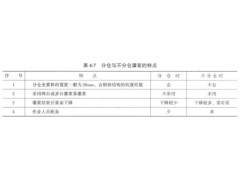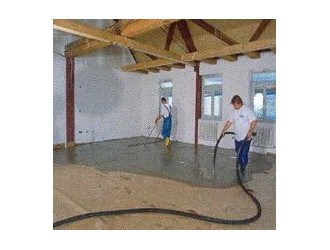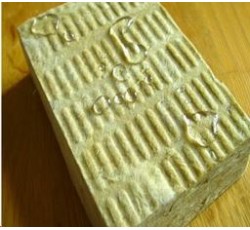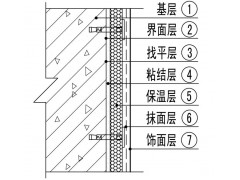ST/AM/AAK乳液聚合动力学及表面活性的研究
唐盛斌,廖双泉,陈永平,桂红星,徐志义,廖建和*
(海南大学材料与化工学院,海南 海口 570228)
【摘 要】 为制备苯乙烯(St)- 丙烯酰胺(AM) -丙烯酸钾(AAK)高分子表面活性剂,在70℃、过硫酸钾(KPS)作引发剂、十二烷基苯磺酸钠(DBS)做乳化剂,恒搅拌速率下研究了St/AM/AAK乳液共聚动力学,考察了KPS用量、DBS对共聚速率的影响。结果表明:乳液共聚速率Rp与KPS浓度的0.34次幂成正比,与DBS浓度的0.59次幂成正比([DBS]>1.37×10−2mol·L−1),与DBS浓度的0.21次幂成正比([DBS]≤1.37×10−2mol·L−1),乳化剂浓度指数偏离Smith-Eward理论模型可解释为体系中单体AM、AAK具有较大的水溶性,使成核胶粒数目增加的结果。用FTIR验证了三种单体都参与了反应。聚合物的最低表面张力为46.5mM·m-1,表面张力随着分子量的升高而升高。DSC&TG表明,聚合物在27℃时,由玻璃态变为高弹态;在218℃时,从高弹态变为粘流态,热稳定性较好。
【关键词】 乳液共聚;苯乙烯;丙烯酰胺;丙烯酸钾;动力学;表面活性
Kinetics and surfactant of Emulsion Copolymerization of St/AM/AAK
TANG Sheng-bin,LIAO Shuang-quan,CHEN Yong-ping,XU Zhi-yi,GUI hong-xin,LIAO Jian-he
(College of Materials Science and Chemical Engineering, Hainan Unversity, Haikou 570228, China)
【Abstract】 In order to prepare polymer surfactant, the free radical emulsion copolymerization of styrene (St), acrylamide (AM) and potassium acrylate (AAK) with the initiator potassium persulphate (KPS),the emulsifier sodium dodecyl benzene sulfnate(DBS) at 70℃ under constant stirring speed was investigated. The effects of KPS and DBS concentration on the rate of emulsion copolymerization (Rp) were also examined. The results show that Rp is proportional to the 0.34th power of KPS concentration; Rp is proportional to the 0.59th power of DBS concentration([DBS]>1.37×10−2mol·L−1) or is proportional to the 0.21th power of DBS concentration([DBS] ≤1.37×10−2mol·L−1), The power value of DBS concentration mentioned under deviates from the theoretical power value of initiator concentration given by Smith-Eward model, which is due to the higher water-solubility of the monomer AM & AAK and its causing the increase of micelle numbers in emulsion copolymerization. FTIR validate terpolymer polymerized by the three monomer. The minimum surface tension of the polymer is 46.5 mM·m-1. With the molecular weigh increasing, the surface tension increases. DSC & TG/DTG showed that the polymer change from glass state into high-elastic state at 27℃,and became viscous state at 218 ℃. Also showed better thermal stability.
【Keywords】 emulsion copolymerization; styrene; acrylamide; potassium acrylate; kinetics; surfactant
1前言
功能性单体的乳液共聚已成为高分子表面活性剂研发的主要途径之一,硬单体苯乙烯作为核体与其他单体如丙烯酸甲酯、丙烯酸丁酯、丙烯酰胺、丙烯酸钾等的乳液共聚产物已广泛用作纸张增强剂、分散松香施胶剂以及萜烯树脂的乳化剂等[1-4]。经典乳液聚合理论认为,乳胶粒的成核机理是胶束成核机理[5],但是该理论模型比较适用于憎水性单体。丙烯酸钾和丙烯酰胺都是水溶性单体,本文通过分析引发剂浓度和乳化剂浓度对聚合速率的影响来确定实验体系的动力学特征,分析水溶性单体的成核机理,并分析特性粘数与表面活性的关系。
2 试验部分
2.1 实验原料
丙烯酰胺AM(分析纯, 天津市大茂化学试剂厂),经丙酮重结晶后使用;过硫酸钾KPS(分析纯,天津市福晨化学试剂厂),用前重结晶;苯乙烯St (化学纯,广东汕头市西陇化工厂)、丙烯酸AA(化学纯,国药集团化学试剂有限公司),减压蒸馏提纯备用;氢氧化钾KOH(分析纯,广州市番禺力强化工厂),十二烷基苯磺酸硫酸钠DBS(化学纯,广州市番禺力强化工厂);对苯二酚(分析纯,广州市番禺力强化工厂)实验用水均为去离子水。
原文下载:
 STAMAAK乳液聚合动力学及表面活性的研究.doc
STAMAAK乳液聚合动力学及表面活性的研究.doc
原文下载:




